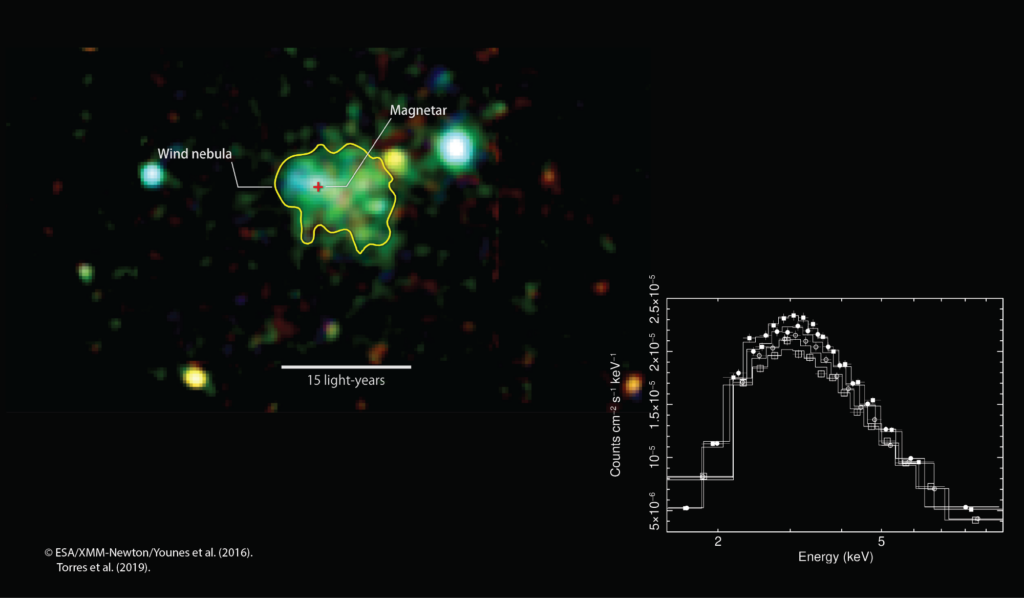A pulsar is a highly magnetized rotating compact star (usually neutron stars but also white dwarfs) that emits beams of electromagnetic radiation out of its magnetic poles. This radiation can be observed only when a beam of emission is pointing toward Earth (similar to the way a lighthouse can be seen only when the light is pointed in the direction of an observer), and is responsible for the pulsed appearance of emission. Neutron stars are very dense and have short, regular rotational periods. This produces a very precise interval between pulses that ranges from milliseconds to seconds for an individual pulsar. The periods of pulsars make them very useful tools for astronomers. Observations of a pulsar in a binary neutron star system were used to indirectly confirm the existence of gravitational radiation!
#AthenaNuggets49 deals with the fact that these pulsars, left overs from supernova explosions, dissipate the bulk of their rotational energy through the emission of a relativistic wind of particles. This is the so-called pulsar wind and it is observed as pulsar wind nebulae.

For a short period that could last for a few hundred years, this wind will be compressed by the reverse shock of the supernova, and the energetics of the nebula may not be controlled by the rotational power of the pulsar, but instead by the compressional heating of the medium. This means that the amount of energy that the nebula could release may not just be an important fraction of the rotational energy as a whole, but it could even overtake it. This is known as super-efficiency. Athena should detect this behavior, which will allow us to study this phase as never before.
